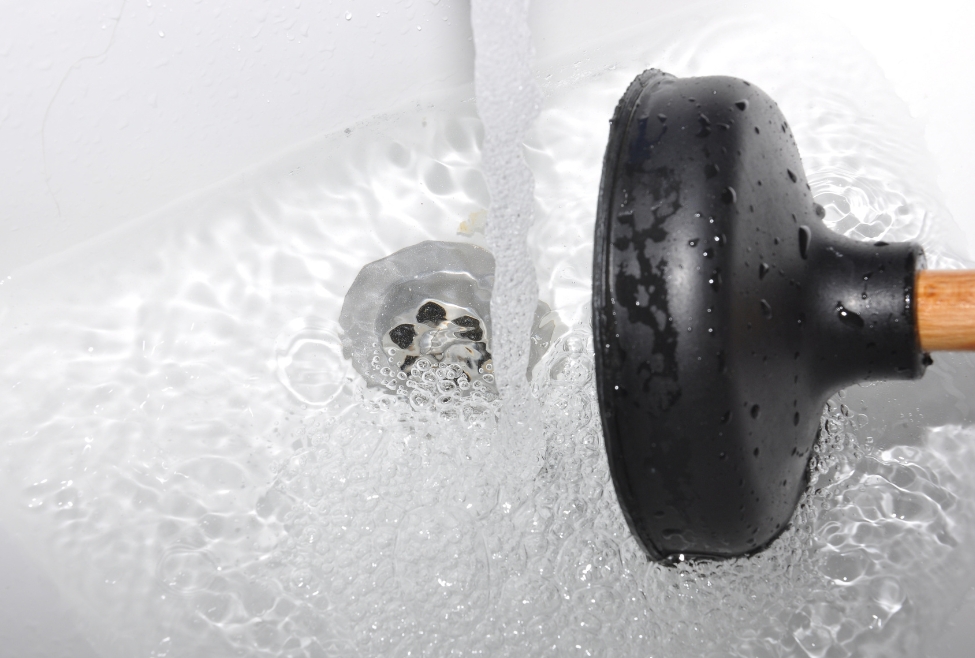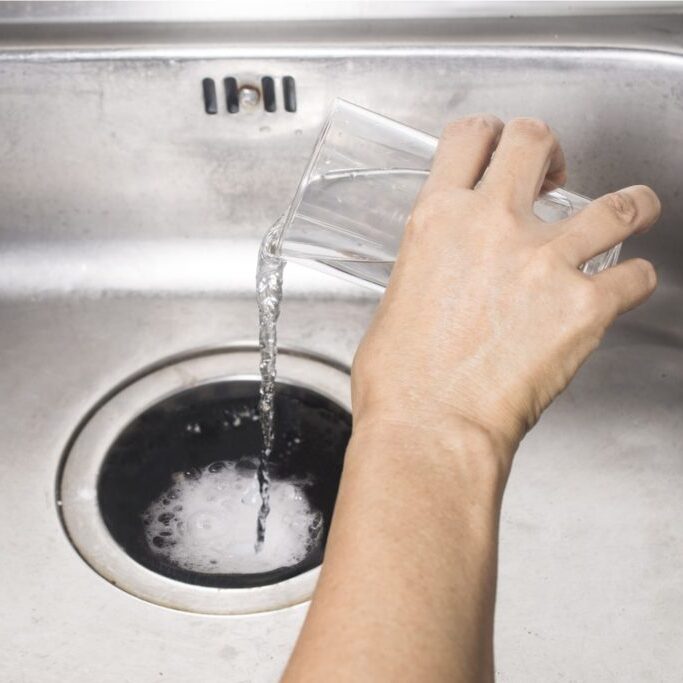Trusted Tips For Fixing A Slow-Draining Sink Fast
Trusted Tips For Fixing A Slow-Draining Sink Fast
Blog Article
We've encountered this post pertaining to Solved! How to Fix a Slow Sink Drain below on the web and believe it made perfect sense to quickly share it with you over here.

Introduction
We've all existed: You're cleaning your teeth or washing your hands, and you see the water pooling in the sink. As opposed to rapidly swirling away, it remains, transforming your once-refreshing early morning regimen right into a miniature overload scene. A slow-draining sink isn't simply bothersome; it's usually a sign of larger pipes concerns hiding below the surface. Fortunately is that many slow-draining sinks can be taken care of with a little know-how, a few standard devices, and some perseverance. Ready to tackle this project head-on? Allow's roll up our sleeves and dive right in.
Recognizing the Sources Of a Slow-Draining Sink
Before you begin poking around in your pipelines, it aids to know what might be creating the slowdown. Recognizing the root cause makes it much easier to choose the best repair.
Common Wrongdoers Behind Slow Drainage
So, what's clogging things up? Commonly, it's a mixture of everyday debris-- think hair, soap scum, toothpaste residue, and leftover food particles. In time, these tiny bits build up and cling to the pipeline wall surfaces, slowly narrowing the passage and making it harder for water to travel through. Sometimes, mineral deposits from tough water can likewise add to the gunk, producing the excellent tornado for stubborn clogs.
When is it Time to Take Action?
If you observe the water draining slower than typical, it's an excellent idea to intervene earlier instead of later on. Waiting as well long can bring about complete obstructions, undesirable odors, and even pipe damage. If the water takes greater than a few secs to clear out after switching off the tap, consider it a red flag and prepare to place on your do it yourself hat.
Devices and Products You'll Need
The right tools make all the distinction. The good news is, you will not require a completely stocked plumbing's van to get the job done.
Vital Tools for Do It Yourself Services
A bettor is your best beginning factor. A tiny, sink-sized bettor produces suction that can dislodge small obstructions. For even more consistent obstructions, a drain serpent (in some cases called a plumbing professional's auger) works wonders. A set of gloves, a flashlight, and possibly a pair of protective safety glasses are also handy.
Suggested Cleansing Solutions
Moderate recipe soap and hot water can aid break down greasy accumulation. A blend of baking soft drink and vinegar is a reliable natural home remedy, and enzymatic cleaners use a more environment-friendly technique. Keep chemical drainpipe cleansers as a last option, as they can be rough on your pipelines.
Safety And Security First: Safety Measures and Prep work
Prior to you launch into unclogging setting, think about safety and security. You're handling potentially filthy water and particles, so slip on a set of handwear covers. If you're using chemical cleaners, make sure the space is well-ventilated and comply with the directions on the tag.
Safety Equipment and Office Configuration
Put down some old towels or cloths around the sink location to capture sprinkles. Remove any type of products that could enter your means, like soap dispensers or tooth brush owners. See to it you have great lighting-- order a flashlight if needed.
Step-by-Step Guide to Dealing With a Slow-Draining Sink
Currently, allow's get involved in the nitty-gritty. This step-by-step process will assist you through straightforward techniques to restore your sink's water drainage.
Action 1: Eliminate and Clean the Stopper
Frequently, the stopper (that small plug you push down to block water) is the initial culprit. Remove it carefully and wipe any kind of hair or gunk caught around its base. Wash it extensively before putting it back in position.
Action 2: Use a Bettor to Displace Particles
Got that bettor ready? Placement it over the drainpipe and give it a couple of firm pumps. The idea is to develop suction that can loosen up any type of clog. If you see little bits of debris floating up, you're on the right track.
Action 3: Attempt a Drainpipe Snake or Wire Wall Mount
If the bettor does not work, it's time to draw out the drain serpent. Delicately feed it into the drainpipe and spin as you go. You could really feel some resistance-- that's most likely the blockage. Keep turning and pulling until you get rid of the obstruction. If you do not have a drainpipe serpent, a straightened out cable wall mount can work in a pinch.
Step 4: Use a DIY Drain Cleaner
An all-natural cleaner made from baking soft drink and vinegar can break down recurring crud. Put half a mug of baking soda right into the drainpipe, followed by half a mug of vinegar. Allow it fizz for about 15 minutes, then flush with warm water. This chain reaction commonly does wonders for small obstructions.
Tip 5: Reassemble and Evaluate the Sink
Put everything back together and run the faucet. Does the water currently swirl away at a respectable speed? If yes, provide yourself a pat on the back. Otherwise, do not anguish-- there are still a few more tricks up your sleeve.
Alternate Methods for Stubborn Clogs
Not all blockages are created equal. If your sink still refuses to work together, consider these alternate remedies.
Sodium Bicarbonate and Vinegar Method
We already touched on this, however it deserves noting again. This mild, eco-friendly technique is much safer than chemical cleansers and commonly quite reliable.
Enzymatic Drainpipe Cleansers
Enzyme-based cleansers utilize all-natural bacteria to absorb raw material. They're an exceptional selection if you're seeking to stay clear of severe chemicals. Simply remember, they might take a bit longer to function their magic.
Chemical Drain Cleaning Company: Benefits And Drawbacks
Chemical cleansers can blast via challenging clogs quick, but they're not without disadvantages. They can produce warmth and fumes, damages pipelines if used excessively, and position environmental risks. Use them sparingly, and constantly comply with the directions very carefully.
Preventive Measures to Keep Your Sink Flowing
Prevention is the best cure. By embracing a couple of straightforward behaviors, you can keep your sink from decreasing in the first place.
Regular Cleaning Routines
Wipe down the sink container and fixture area on a regular basis. Remove hair or food bits prior to they have a chance to wash down the drain.
Preventing Hazardous Compounds Away
Think twice prior to disposing coffee grounds, grease, or coarse veggie scraps down the sink. These culprits cling to pipeline wall surfaces, producing clogs in time.
Regular Upkeep Checks
Set up a quick regular monthly examination. Run hot water through the sink for a few minutes, taking note of the flow. If it seems sluggish, act fast before it becomes a full-on obstruction.
When to Call a Specialist Plumbing
Often, regardless of how hard you attempt, that obstruct just won't move. That's when it's time to bring in the pros.
Signs That Show an Extra Severe Issue
If your sink drains pipes slowly regardless of multiple attempts, or if you observe water supporting in various other components (like your shower or toilet), you may have an extra severe pipes problem lurking much deeper in the system.
Balancing Do It Yourself Initiatives with Specialist Help
While do it yourself can conserve you money and use a feeling of success, there's no shame in calling a professional. A specialist plumbing technician can analyze your whole plumbing arrangement, guaranteeing there's no underlying damages or long-term issue that can cost you a lot more later on.
Contrasting Prices and Long-Term Solutions
Prior to making a decision, take into consideration the big picture. An affordable, quick fix might address the problem briefly, however buying an extra long-term service could save you money and stress and anxiety in the future.
Evaluating the Expenses of DIY vs. Professional Fixes
Do it yourself fixes commonly cost little bit greater than the price of a bettor or a bottle of cooking soda. Expert services, on the other hand, included a cost however might avoid repetitive issues and expensive repairs later.
Buying Quality Fixtures and Upgrades
If your sink's style adds to constant blockages, it could be worth updating to higher-quality fixtures or modifying the plumbing format. Consider this a financial investment in your home's performance and comfort.
Final thought
A slow-draining sink can feel like a small irritability, however it's usually a sign that your plumbing needs a little TLC. By comprehending the source, utilizing the right tools and methods, and dedicating to easy preventive measures, you can keep your sink moving easily. And when all else stops working, never ever think twice to employ a specialist-- your home's plumbing is worth the investment in treatment and upkeep.
Three Common Ways to Fix a Slow Drain
Baking Soda Method
Boil a full pot of water. Measure out cup of baking soda and pour it down the drain. Then take cup of the magical cleansing substance known as white vinegar and drop that down there too. Allow the mixture to fizz in the drain for five minutes as the vinegar and baking soda combine. Now dump in that whole pot of boiling water. This combination of cleaning substances should clear out anything that is causing your sink to drain slowly. If it doesn t...
Zip-It
If the baking soda method doesn t clear out your drain, it may be because a significant amount of hair and/or other debris has collected there and you need to remove it. Purchase a Zip-It tool at any home improvement or hardware store and insert it into your drain. It will catch any collected hair or debris that s blocking the flow of water. Pull it out. If it s got a big clump of hair, etc. on the end, you ve probably got your culprit.
Drain Cleaner
If these methods don t work, there is the standard drain cleaner that you can also buy in a hardware store or even your local grocery store. It s better if you can use a household solution, but these drain cleaners often work in a pinch. They re very simple to use. You generally just dump them in your drain and wait. If even this method is not effective, it may be time to call the plumber.
https://www.mrrooter.com/oneida/about-us/blog/2017/july/three-common-ways-to-fix-a-slow-drain/

I'm certainly very inquisitive about 4 Tips to Fix a Slow Draining Sink and I really hope you enjoyed reading the entire entry. Those who appreciated our article kindly remember to share it. I praise you for your time. Revisit us soon.
At This Website Report this page